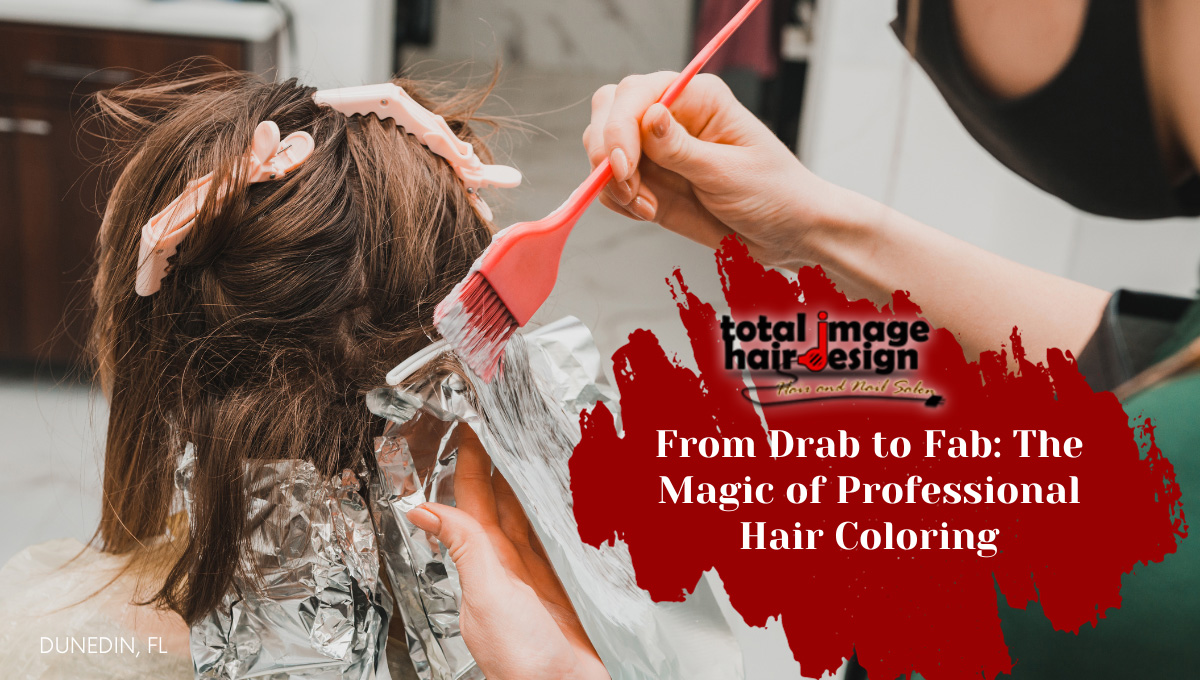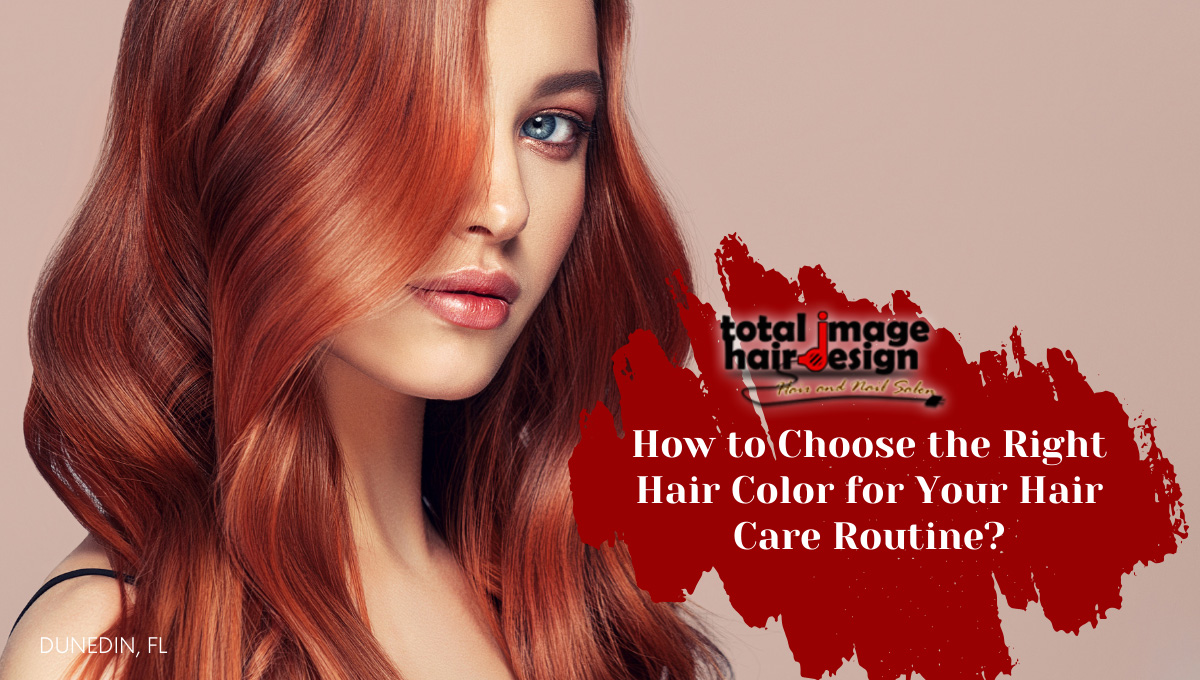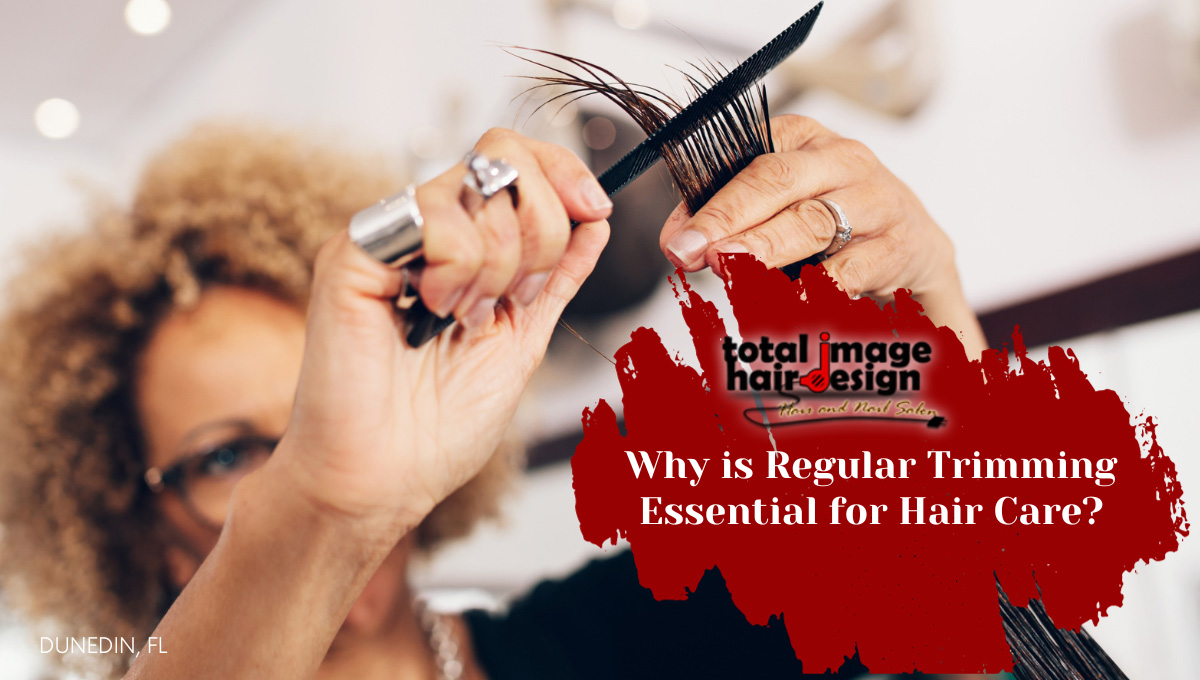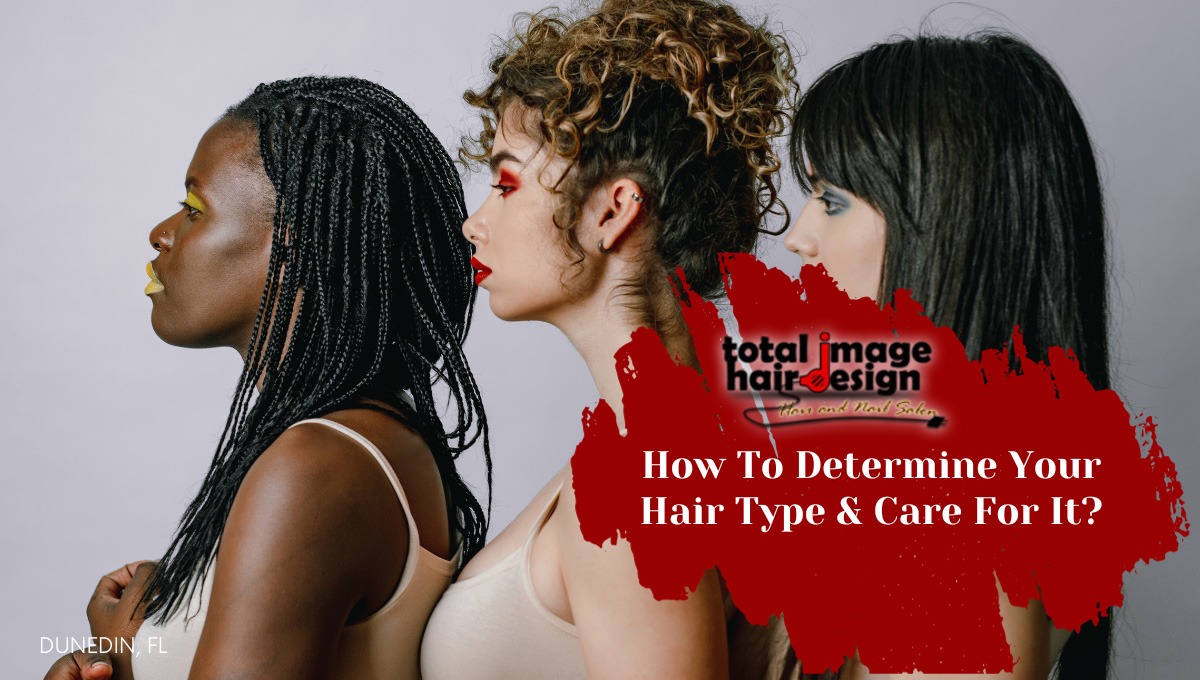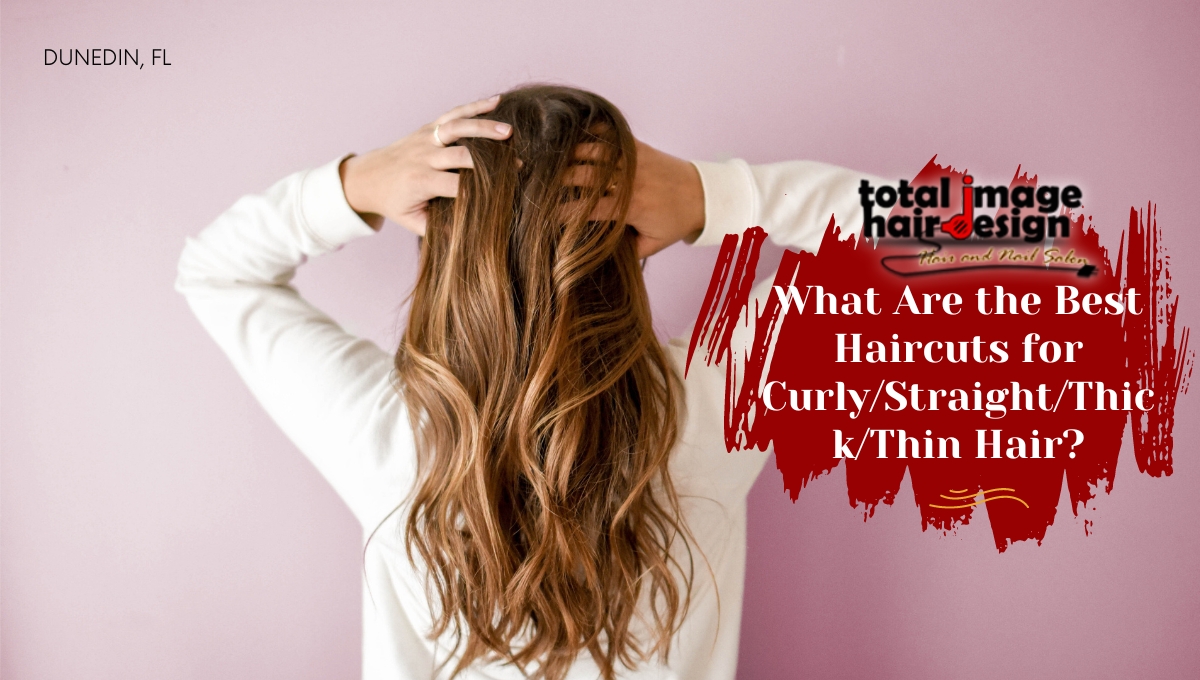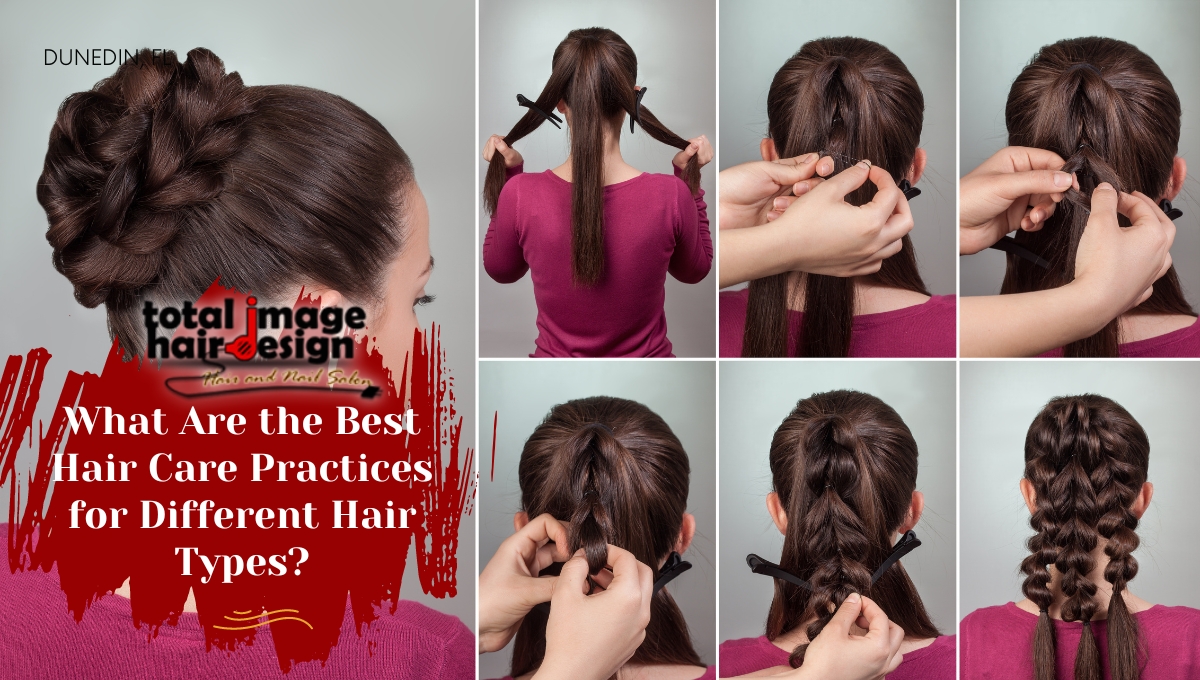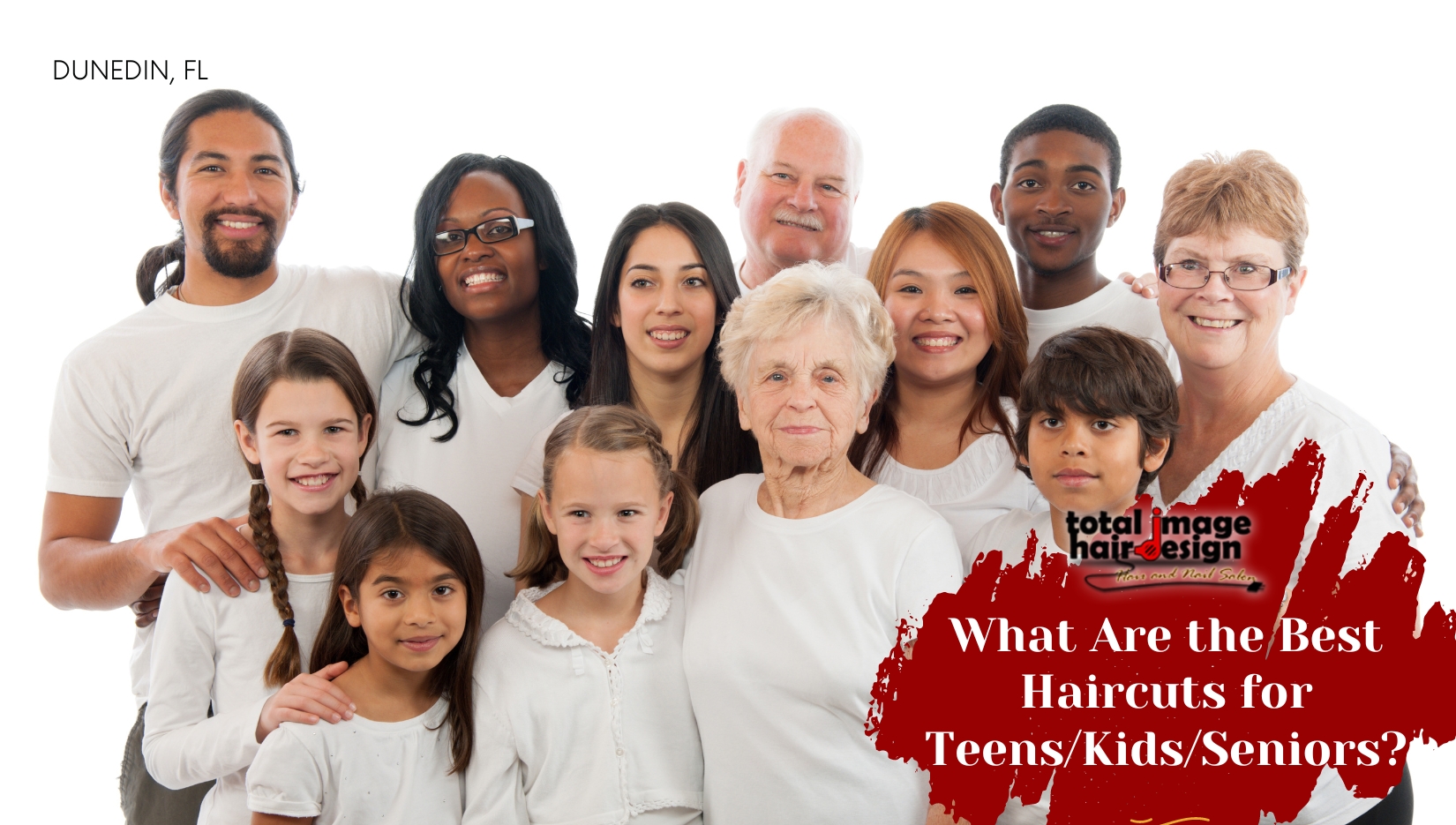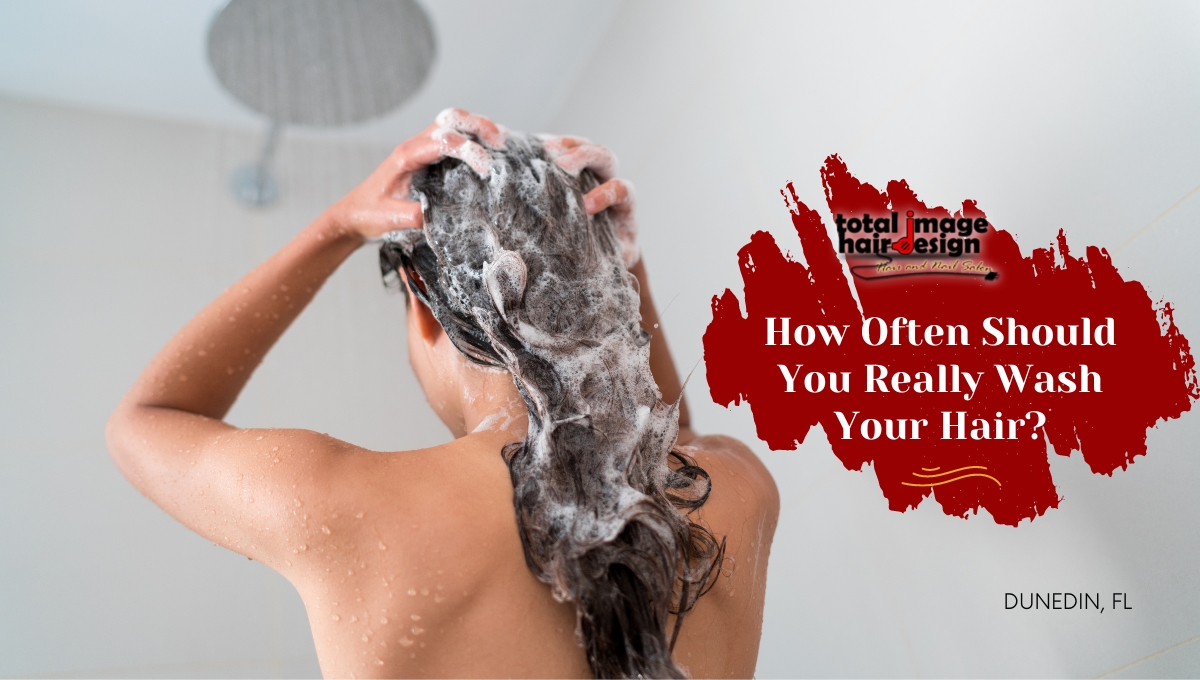Professional hair coloring has the ability to drastically change your look and enhance your natural beauty.
Continue readingHow Can You Achieve Shiny Hair Naturally?
Achieve shiny hair naturally with certain homemade remedies such as apple cider vinegar and aloe vera but also consult your hair stylist.
Continue readingHow to Choose the Right Hair Color for Your Hair Care Routine?
Selecting the right hair color can be an intimidating endeavor. Your hair color should echo your personality and align with your lifestyle.
Continue readingWhat Natural Home Remedies Can You Use for Effective Hair Care?
What natural home remedies can you use for effective hair care? Discover what common natural ingredients you can use to keep your hair healthy
Continue readingWhy is Regular Trimming Essential for Hair Care?
Regular trimming should be an essential part of your hair care routing to ensure the longevity and health of your hair.
Continue readingHow To Determine Your Hair Type & Care For It?
Key Takeaways:
- Determine your hair type by inspecting the texture, pattern, thickness, porosity, elasticity, and moisture levels of your hair.
- Each hair type has unique needs and challenges that require tailored care routines.
- Avoid common hair care mistakes like over-washing, using unsuitable hair care tools, and neglecting to condition and deep treat your hair.
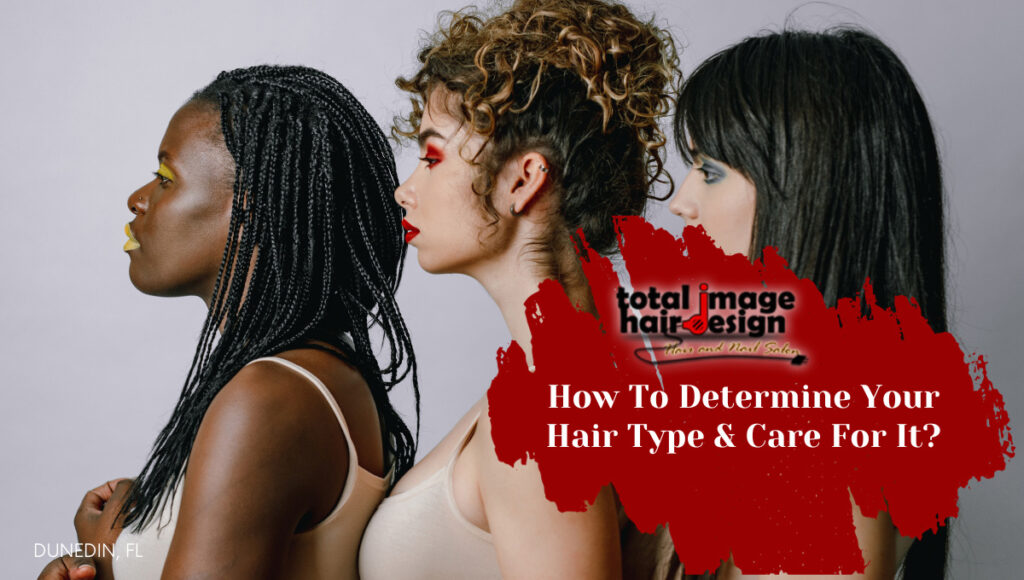 Understanding your hair type isn’t merely about luxury, but also to have a hands-on approach to your hair care. Knowing the nature of your hair opens the door to a world of tailored care routines, better styling, and the glowing health of your mane. Proper hair care allows your hair to reveal its natural beauty, simultaneously improving your overall appearance.
Understanding your hair type isn’t merely about luxury, but also to have a hands-on approach to your hair care. Knowing the nature of your hair opens the door to a world of tailored care routines, better styling, and the glowing health of your mane. Proper hair care allows your hair to reveal its natural beauty, simultaneously improving your overall appearance.
Understanding Different Hair Types
Straight Hair
Straight hair, with its glossy and smooth texture, is visually appealing. However, it often battles flatness and oil build-up, which makes regular washing a must. Your holy grail products? Light conditioners and volumizing shampoos.
Wavy Hair
Wavy hair, with its signature ‘S’ shape, can range from soft to coarser waves. Its challenges? Managing frizz and dryness. Your best allies are moisturizing conditioners and styling mousse for defined waves.
Curly Hair
Curly hair comes in intricate patterns, from loose curls to tight ringlets. The common hindrances? Dryness and a tendency to break. Intense moisturizers and curl defining products are your must-haves.
Coily Hair
Coily hair, the most fragile of all types, is formed by tight curls or zigzags right from the scalp. Challenges? Shrinkage and dryness. Heavy-duty moisturizers, leave-in conditioners, and curl enhancing creams are your best friends.
Determining Your Hair Type
You can determine your hair type at home by inspecting the texture, thickness, and pattern of your strands. Understanding the porosity, elasticity, and moisture levels of your hair also helps greatly. Online resources and quizzes can provide an initial understanding, but remember they have limitations.
Professional consultation offers a more comprehensive insight. Hair salons, like the top-notch stylists at Total Image Hair Designs in Dunedin, FL, use specialized tools for a precise analysis of your hair type.
Hair Care Tips for Each Hair Type
Straight Hair Care Tips
Shampoo and condition regularly to manage oiliness, and maintain volume with lightweight products. Protect your hair from heat styling damages with thermal protectants.
Wavy Hair Care Tips
Manage frizz with silk pillowcases and satin scarves. Enhance your natural waves with curl-defining products.
Curly Hair Care Tips
Preserve moisture by using hydrating masks and ditching sulfates. Protect your curls from breakages with microfiber towels and wide-toothed combs.
Coily Hair Care Tips
Combat shrinkage with protective styles and promote growth with scalp massages. Nourish and define your coils with penetrative oils and butters.
Common Hair Care Mistakes to Avoid
Whether over-washing or under-washing, both extremes damage your hair. Using unsuitable hair care tools and accessories can lead to breakages, and neglecting to condition and deep treat your hair regularly deprives it of its much-needed nourishment. Excessive heat styling and chemical treatments can wreak havoc on your hair’s health.
Conclusion
Understanding your hair type is paramount to nurturing healthy, beautiful hair. Embrace and celebrate your unique hair texture. After all, your hair is your crowning glory.
Pair this knowledge with a consistent hair care practice, and you’re on the right track to attaining gorgeous, healthier hair that’ll turn heads. If you need professional assistance and guidance, turn to Total Image Hair Designs, a renowned hair salon in Dunedin, FL. Their skillful stylists believe in personalized hair care to maximize your hair’s potential, ensuring that you look and feel your absolute best.
References:
- “Hair Type Chart: How to Determine Your Actual Hair Type.” https://www.functionofbeauty.com/blog/new/how-to-determine-your-hair-type/.
- “How to Figure Out Your Curl Type – Hair – Allure.” 27 Sep. 2023, https://www.allure.com/gallery/curl-hair-type-guide.
- “Types of Hair: How to Style and Care for Your Hair Type – Healthline.” 30 Aug. 2019, https://www.healthline.com/health/beauty-skin-care/types-of-hair.
What Are the Best Haircuts for Curly/Straight/Thick/Thin Hair?
Key Takeaways:
- Hair type plays a crucial role in determining the best haircut for you.
- Consider factors such as face shape and personal style when selecting the perfect haircut.
- Visit an experienced stylist for personalized advice and to discover the transformative power of the perfect haircut.
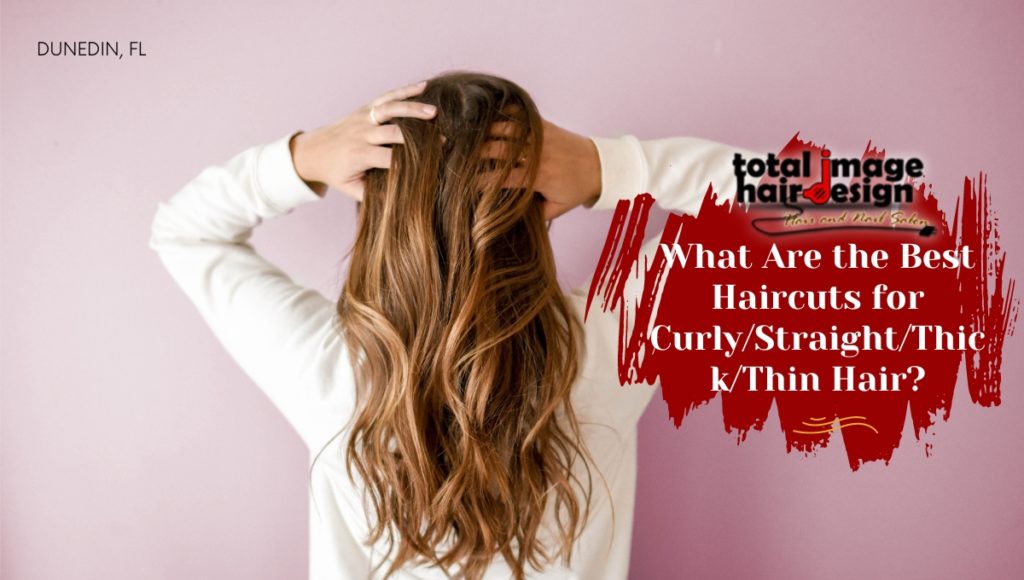 Finding the perfect haircut is not as simple as merely flipping through a magazine and choosing a style that catches your eye. Your hair type plays a crucial role in determining the haircut that will look best on you. To help navigate this tricky terrain, we’ve compiled a comprehensive list of the best haircuts for curly, straight, thick, and thin hair. Our aim? To arm you with insights that will make your next trip to the hair salon a breeze.
Finding the perfect haircut is not as simple as merely flipping through a magazine and choosing a style that catches your eye. Your hair type plays a crucial role in determining the haircut that will look best on you. To help navigate this tricky terrain, we’ve compiled a comprehensive list of the best haircuts for curly, straight, thick, and thin hair. Our aim? To arm you with insights that will make your next trip to the hair salon a breeze.
Curly-haired Conquests
Curly hair comes in a variety of forms, from barely-there waves to tight, corkscrew curls. Understanding the unique characteristics of your curls will help you select the right cut. For looser, wavy hair, try long layers that will provide movement without sacrificing volume. If you’ve got tighter curls, opt for a shoulder-length cut with razored edges for a playful and modern twist. Keep your curls looking their best by investing in a quality leave-in conditioner and utilizing a wide-tooth comb to detangle gently.
Straight Shooter
Straight hair, too, is not a monolith. Some may have a fine texture and be prone to flatness, while others might be thick and resistant to bending. For fine, straight hair, consider a blunt bob that adds the illusion of thickness. Conversely, those with thicker straight hair may find long layers with subtle angle work wonders to remove weight while maintaining a sleek profile. To keep your straight locks polished, invest in a high-quality heat protectant for styling and avoid over-washing, which could strip natural oils from your hair.
The Thick of It
Thick hair is often regarded as a blessing, but managing it can be a challenge. To keep your mane in check, you’ll want to consider haircuts that remove weight without sacrificing style. A classic long, layered cut is a great option for thick hair, allowing for movement while maintaining a lush, full appearance. If you’re feeling a bit more adventurous, an edgy, shaggy cut can give thick hair an incredibly modern and stylish look. Maintain your thick hair with regular hair masks to ensure it remains healthy and manageable.
Thin is In
For those with thin hair, the objective is often to create the illusion of fullness. Opt for haircuts that add volume and body, such as a textured bob. Alternatively, consider a soft, layered cut that gently frames the face, adding dimension without exposing the scalp. To keep your thin hair looking its best, try using a volumizing shampoo and avoiding heavy conditioners that can weigh it down.
Factors Beyond Hair Type
Of course, hair type is only one piece of the puzzle when choosing the perfect haircut. Your face shape and personal style also play a significant role in the decision. For example, individuals with round faces might benefit from a longer, layered cut, while those with heart-shaped faces might find shorter, face-framing layers flattering. And, of course, your personal style will help dictate the haircut that makes you feel most confident.
In conclusion, there’s no one-size-fits-all approach when it comes to selecting the best haircut for your hair type. By understanding the characteristics of your curly, straight, thick, or thin hair, you can make more informed decisions and feel confident in your choice. However, no advice can replace the expertise of an experienced stylist.
That’s where Total Image Hair Designs comes in. Our hair salon in Dunedin, FL, is home to skilled stylists who will work with you to find the perfect haircut for your hair type and personal style. Don’t let uncertainty hold you back; visit Total Image Hair Designs and discover the transformative power of the perfect haircut.
References:
- “Curly Hair Types Chart: How to Find Your Curl Pattern | Allure.” 31 Dec. 2021, https://www.allure.com/gallery/curl-hair-type-guide.
- “What are the best hairstyles for very thin hair?.” https://www.hadviser.com/very-thin-hair/.
- “Solutions for Thick Hair | Hair Challenges – Lounge Hair Studio.” https://loungehairstudio.com/solutions-for-thick-hair-challenges/.
What Are the Best Hair Care Practices for Different Hair Types?
Key Takeaways:
- Different hair types require unique hair care practices and products to promote overall hair health.
- Incorporate regular trims and protective styles to prevent hair damage and split ends.
- A balanced and nutritious diet is essential for maintaining hair health, and visiting a professional stylist can help you find the perfect hair care regimen for you.
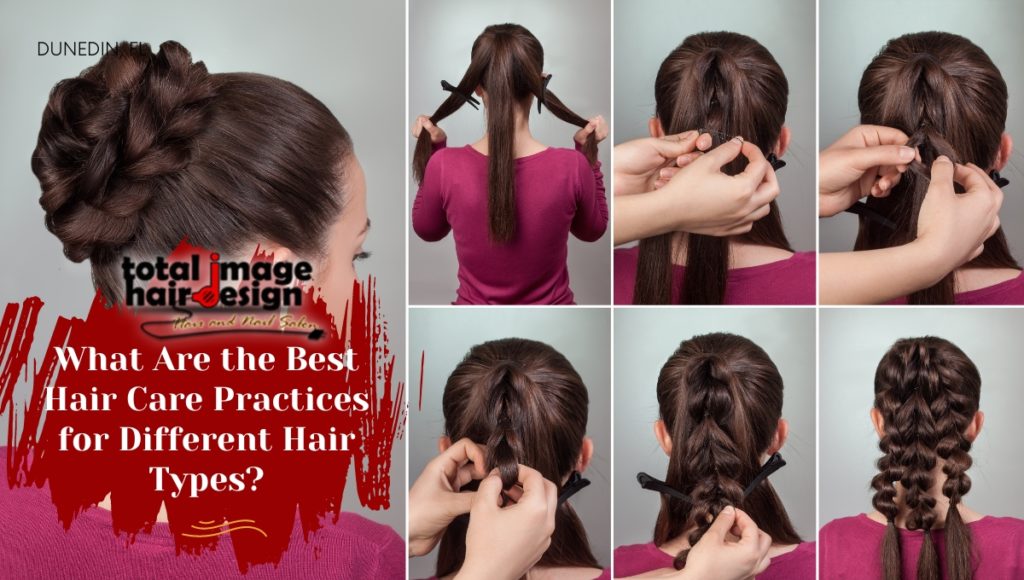 The quest for healthy and lustrous locks is a universal pursuit, but it’s important to know that not all hair is created equal. Different hair types have unique needs based on texture, density, and porosity. As you embark on your journey to discovering the optimal hair care routine for your tresses, keep in mind that there’s no one-size-fits-all solution. Below is a guide on the best practices for various hair types, with an emphasis on working with your hair’s natural texture and characteristics.
The quest for healthy and lustrous locks is a universal pursuit, but it’s important to know that not all hair is created equal. Different hair types have unique needs based on texture, density, and porosity. As you embark on your journey to discovering the optimal hair care routine for your tresses, keep in mind that there’s no one-size-fits-all solution. Below is a guide on the best practices for various hair types, with an emphasis on working with your hair’s natural texture and characteristics.
Hair Care Practices for Straight Hair
For those with straight hair, your locks may be more prone to oiliness as the sebum produced by your scalp can run down the hair shaft without interruption. Focus on keeping your hair clean by washing it every other day or using dry shampoo when necessary. Ensure that you’re using a gentle, sulfate-free shampoo to avoid stripping your hair of its natural oils and apply a lightweight conditioner to keep it nourished.
Heat styling can be damaging to straight hair, so always use a heat protectant and avoid using high-temperature tools. Additionally, incorporate regular trims to prevent split ends and maintain hair health. As for styles and cuts, consider adding layers or face-framing angles to create movement and dimension.
Hair Care Practices for Wavy Hair
Wavy-haired individuals often find themselves grappling with frizz and definition. To enhance and define your waves, scrunch a light, non-sticky mousse or salt spray into your hair while it’s damp and let it air dry. To avoid frizz, choose sulfate-free, moisturizing shampoo and conditioner.
Maintaining volume is essential for wavy hair, so try using a diffuser attachment on your blow dryer and avoid heavy products that weigh hair down. Experiment with different styling techniques and tools, such as large-barrel curling irons, to accentuate your waves.
Hair Care Practices for Curly Hair
Curly hair is often characterized by its need for moisture. Hydration is key to maintaining healthy, bouncy curls, so invest in a moisturizing shampoo, conditioner, and leave-in conditioner. To detangle and manage knots, use a wide-tooth comb while your hair is wet and saturated with conditioner.
For styling, scrunch a lightweight gel or curl-defining cream into your hair and diffuse or air dry. Avoid touching your curls when they’re drying to prevent frizz. Experiment with different styling methods and products to find what works best for your curl pattern.
Hair Care Practices for Kinky/Coily Hair
Kinky and coily hair types require a deep understanding of their unique characteristics and needs. For starters, moisturizing and hydrating products are your hair’s best friends. Opt for sulfate-free shampoos and rich, creamy conditioners. Incorporate regular deep conditioning treatments and seal in moisture with oils or butters.
To prevent breakage, be gentle when detangling, and use appropriate protective styles to minimize stress on your hair. Embrace your natural texture and work with it to find styling methods that suit your preferences.
General Hair Care Practices for All Hair Types
Regardless of your hair type, remember that a balanced and nutritious diet promotes overall hair health. Regular trims and appropriate hair treatments will keep split ends and damage at bay, while avoiding harsh chemicals, heat, and tight hairstyles will maintain your hair’s integrity.
Taking the time to experiment with different hair care practices will help you discover what works best for your unique hair type. If you’re ready to level up your hair care routine and work with experienced stylists, visit Total Image Hair Designs, a hair salon in Dunedin, FL. Their team of expert stylists will help you find the perfect hair care regimen tailored to your individual needs and provide luxurious treatments to keep your locks looking and feeling their best.
References:
- “Tips for Heat Styling Your Hair | Avoid Hair Heat Damage – Prose.” 27 Jan. 2021, https://prose.com/blog/how-to-heat-style-without-damage.php.
- “How to Stop and Prevent Hair Breakage – Carol’s Daughter.” https://www.carolsdaughter.com/blog/hair/natural-hairstyles/how-to-stop-hair-breakage.html.
- “Tips for healthy hair – American Academy of Dermatology.” https://www.aad.org/public/everyday-care/hair-scalp-care/hair/healthy-hair-tips.
What Are the Best Haircuts for Teens/Kids/Seniors?
Key Takeaways:
- The right haircut can make or break confidence levels, leaving a lasting impact on one’s self-esteem and image.
- Consider your face shape, hair type, and lifestyle when choosing a haircut.
- Schedule regular trims and use proper washing and conditioning techniques to maintain your hairstyle.
What Are the Best Haircuts for Teens/Kids/Seniors?
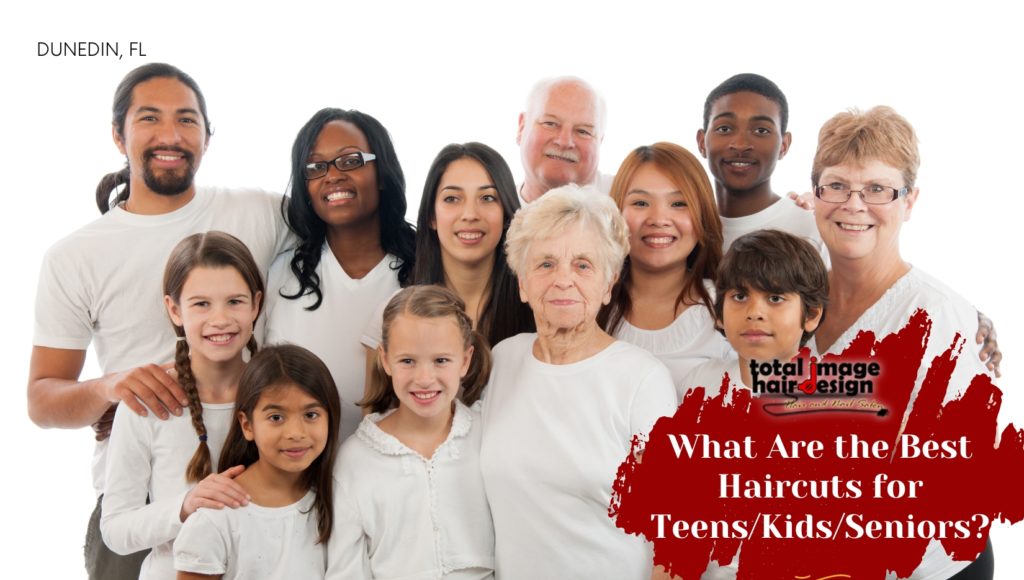 Introduction: The Importance of Haircuts Across Ages
Introduction: The Importance of Haircuts Across Ages
You may wonder why haircuts are such a significant aspect of our lives, no matter our age. For teens, kids, and seniors alike, the right haircut can make or break confidence levels, leaving a lasting impact on one’s self-esteem and image. The perfect haircut can not only enhance your facial features but also express your unique personality. So how do you find the optimal hairstyle at any age? This article will guide you through the best haircuts for teens, kids, and seniors, along with factors to consider in making your decision.
Best Haircuts for Teens: In Style and On Trend
1. Long Layered Hairstyle: This style adds volume and texture, while the layers frame the face beautifully. A versatile option, long layers can be left straight, curled, or tied back, making it a go-to haircut for teens.
2. Bob Cut: A classic option that has stood the test of time. Bobs can be tailored to your desired length and style, whether it be a sleek, one-length look or a more textured, wavy version.
3. Pixie Cut: For the bold, daring teen who wants to make a statement. The pixie cut is low maintenance, chic, and perfect for showcasing your facial features.
4. Fringe or Bangs: Whether it’s a soft, side-swept fringe or a bold, blunt bang, adding fringe can complement most haircuts and face shapes.
5. Beachy Waves: The ultimate casual, effortless look. Beachy waves work well with longer hair, conveying a relaxed and carefree vibe.
Best Haircuts for Kids: Easy Maintenance and Adaptability
1. Classic Bob Cut: A timeless option suitable for young girls, the bob cut is easy to maintain and allows for some styling versatility.
2. Layered Haircut: A great choice for both boys and girls, layered haircuts can add movement and texture to a variety of hair lengths.
3. Pixie Cut: A low-maintenance option for young girls, the pixie cut is not only modern and chic but also easy to style and care for.
4. Shaggy Haircut: Perfect for the child who wants a laid-back, cool look. The shaggy haircut works well for both boys and girls and requires minimal styling.
5. Side Swept Bangs: This adaptable option can be paired with various haircuts, adding a touch of style and softness to your child’s look.
Best Haircuts for Seniors: Stylish and Age-Appropriate
1. Short Bob Cut: A classic, sophisticated style that works for all ages. The short bob is easy to maintain and can be tailored to suit your personal taste.
2. Layered Haircut: Adding layers can provide volume and movement, particularly for seniors with fine or thinning hair.
3. Shoulder-Length Hair: A versatile option that allows for some styling experimentation, while remaining age-appropriate and easy to care for.
4. Pixie Cut: A chic, low-maintenance haircut that exudes confidence and style.
5. Classic Perm: For seniors who want some added volume and texture, a classic perm can provide a look that is both timeless and fashionable.
Factors to Consider When Choosing a Haircut: Face Shape, Hair Type, and Lifestyle
Before diving into a new hairstyle, consider your face shape, hair type, and lifestyle. These elements will all play a significant role in determining the most suitable haircut for you.
Tips for Maintaining Your Haircut: Scheduling and Care
To keep your haircut looking flawless, schedule regular trims and use proper washing and conditioning techniques. Utilize styling products suited to your hair type and educate yourself on the best methods to maintain your chosen look
In conclusion, the best haircuts for teens, kids, and seniors provide a delicate balance between fashion and functionality. Remember the importance of haircuts in boosting self-confidence and don’t be afraid to try something new. If you’re in Dunedin, FL, and looking for a trustworthy hair salon, consider visiting Total Image Hair Designs. Their expert stylists will guide you in finding the perfect haircut for your age and lifestyle, ensuring you leave feeling refreshed and rejuvenated.
References:
- “How Often Should You Trim Your Hair? Here’s What to Know.” https://www.hair.com/how-often-should-you-trim-your-hair.html.
- “How to Determine Your Face Shape (The Right Way).” 13 Jun. 2023, https://www.latest-hairstyles.com/advice/face-shape-guide.html.
- “The Best Haircuts for Every Face Shape – Byrdie.” 14 Jun. 2022, https://www.byrdie.com/the-best-haircuts-for-every-face-shape-5070939.
How Often Should You Really Wash Your Hair?
Key Takeaways:
- The frequency of hair washing depends on a variety of factors such as hair type, scalp condition, lifestyle, and the products you use.
- Generally, straight or fine hair should be washed every other day, wavy or curly hair two to three times per week, and coily or highly textured hair once a week.
- Alternatives to frequently washing your hair include dry shampoo, co-washing, and scalp treatments like exfoliants or serums.
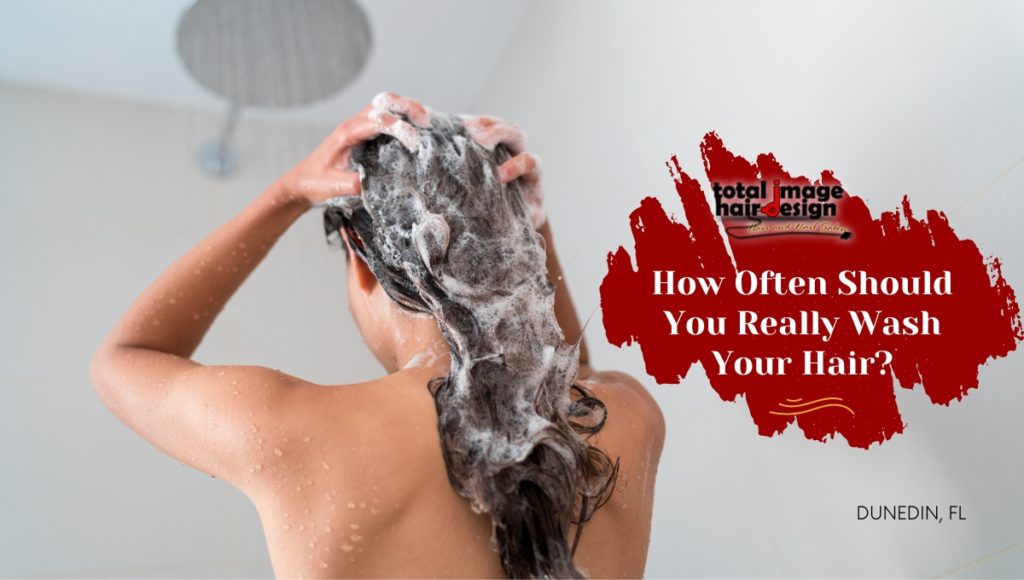 Washing your hair may seem like a simple task, but figuring out the right frequency for doing so can be a complicated matter. A clean scalp and fresh strands are vital for maintaining good hair hygiene and a polished appearance, but overdoing it can sometimes lead to frizz, dryness, and even irritation. So, how often should you really wash your hair? The answer depends on a variety of factors, which we will explore below.
Washing your hair may seem like a simple task, but figuring out the right frequency for doing so can be a complicated matter. A clean scalp and fresh strands are vital for maintaining good hair hygiene and a polished appearance, but overdoing it can sometimes lead to frizz, dryness, and even irritation. So, how often should you really wash your hair? The answer depends on a variety of factors, which we will explore below.
First, consider your hair type. Hair can be characterized into different categories such as straight, wavy, curly, or coily. Typically, straight and fine hair becomes oily faster, which may require more frequent washing. On the other hand, wavy, curly, and coily hair tends to be drier, so washing it less often might be beneficial. Your stylist at a hair salon in Dunedin, FL, can help you understand your hair type and recommend a washing routine tailored to your needs.
Next, examine the condition of your scalp. People with an oily scalp might need to wash their hair more regularly to prevent greasiness and unpleasant odors. Conversely, those with a dry or sensitive scalp might benefit from spacing out their hair washing to avoid stripping the scalp of natural oils and exacerbating dryness or irritation.
Your lifestyle and the activities you engage in are other crucial factors influencing your hair washing frequency. If you work out daily or spend a considerable amount of time outdoors, you are likely to sweat and accumulate dirt in your hair, which may warrant more frequent washing. If, however, you have a sedentary lifestyle or are mainly indoors, your hair could stay cleaner for a longer period.
Lastly, the hair products you use can impact your hair washing routine. Some styling products, such as gels, hairsprays, or creams, can build up over time and necessitate more frequent washing to prevent dullness and residue.
Now that we’ve identified the factors that contribute to hair washing frequency, let’s look at some general guidelines. For straight or fine hair, washing every other day is often recommended. Wavy or curly hair could benefit from washing two to three times per week, while coily or highly textured hair might only require washing once a week. However, these recommendations are not one-size-fits-all, and you should pay attention to how your hair and scalp respond to different routines.
There are several myths and misconceptions surrounding hair washing frequency. Contrary to popular belief, washing your hair more often does not make it produce more oil. This false idea arises because overwashing can strip your scalp of natural oils, causing it to produce more oil to compensate. Also, shampooing does not cause hair damage unless done too frequently or with harsh products. And using hot water to wash your hair can actually strip it of natural oils and make it more prone to damage.
If frequent washing is not suitable for your hair type or scalp, consider alternatives like dry shampoo, which absorbs excess oil and freshens up your hair without the need for water. Another option is co-washing, which involves using a conditioner to cleanse your hair rather than harsh shampoos. This method can help preserve moisture and prevent damage in dry or curly hair types. Finally, scalp treatments like exfoliants or serums can be valuable in maintaining a healthy scalp between washes.
In conclusion, finding the right hair washing routine is essential for maintaining your hair’s health and appearance. It is crucial to consider your hair type, scalp condition, lifestyle, and the products you use when determining your ideal hair washing frequency. Don’t be afraid to experiment and adjust your routine based on your hair’s needs, and consult with stylists at hair salons, such as Total Image Hair Designs in Dunedin, Florida, to find the perfect balance.
References:
- “Hair Type Chart: How to Determine Your Actual Hair Type.” https://www.functionofbeauty.com/blog/new/how-to-determine-your-hair-type/.
- “Here’s How Often You Should Wash Your Hair – Cleveland Clinic.” 14 Mar. 2022, https://health.clevelandclinic.org/the-dirty-truth-about-washing-your-hair/.
- “Debunking Common Shampoo and Hair Washing Myths – Petal Fresh.” 1 May. 2019, https://petalfresh.com/debunking-common-shampoo-and-hair-washing-myths/.

